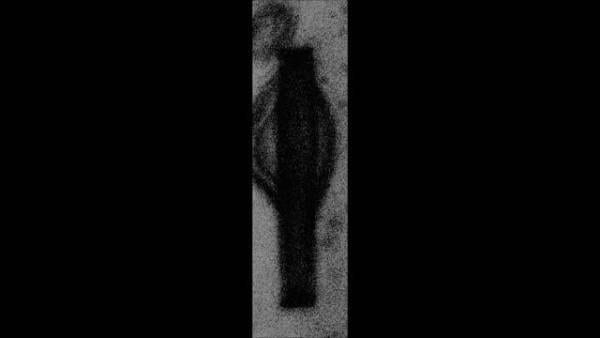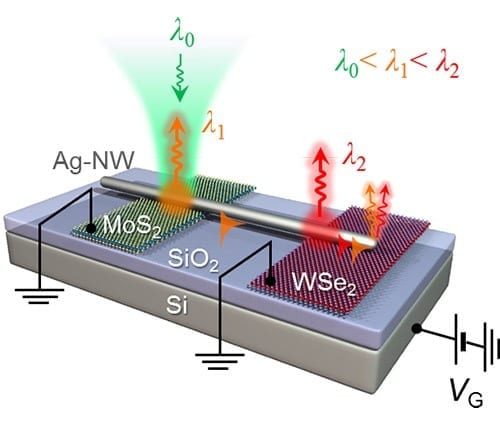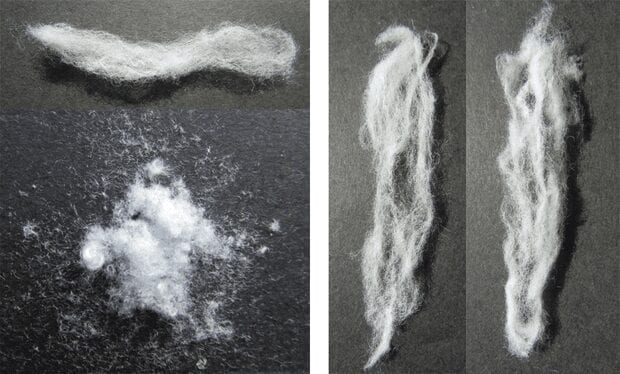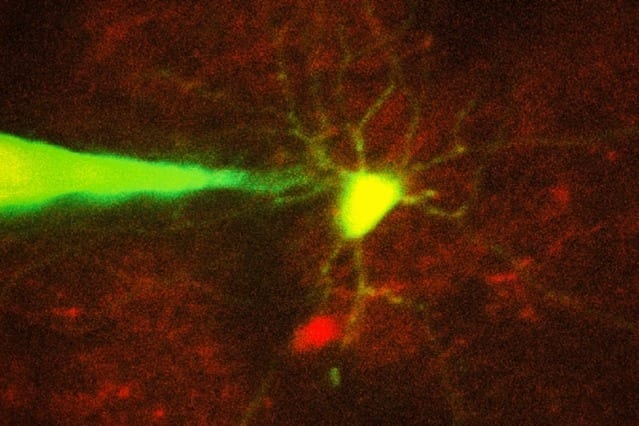
Novel system opens door to on-chip biological and chemical sensing applications, such as detecting chemicals in real-time continuous flow systems and open-air environments
Researchers at the Hebrew University of Jerusalem have created a nanophotonic chip system using lasers and bacteria to observe fluorescence emitted from a single bacterial cell. To fix the bacteria in place and to route light toward individual bacterial cells, they used V-groove-shaped plasmonic waveguides, tiny aluminum-coated rods only tens of nanometers in diameter. The novel system, described in the journal Nano Letters, paves the way for an efficient and portable on-chip system for diverse cell-based sensing applications, such as detecting chemicals in real-time.
The field of on-chip photonic devices for biological and chemical sensing applications presents many powerful alternatives to conventional analytical techniques for applications ranging from “lab on a chip” to environmental monitoring. However, these sensing schemes rely mainly on off-chip detection and require a cumbersome apparatus, even when measuring only single cells.
The Hebrew University team looked for ways to integrate all system components, including light sources and detectors, on-chip at the nanoscale. This would result in a lab-on-chip system that is small, portable and can perform sensing in real-time.
To achieve this, they molecularly engineered live bacteria that emit a fluorescent signal in the presence of target compounds. They paired these on-chip with a nanoscale waveguide, which not only served the purpose of guiding light, but also allowed mechanical trapping of individual bacteria within the V-groove.
In three different illumination conditions, they experimentally demonstrated the interrogation of an individual Escherichia coli bacterial cell using a nanoscale plasmonic V-groove waveguide. First, they measured the light emitted from a bacterium flowing on top of the nanocoupler in a liquid environment by allowing the fluorescence from the bacterium to be coupled directly into the waveguide through the nanocoupler. Next, a bacterium was mechanically trapped within the V groove waveguide and was excited by laser directly either from the top or through the nanocoupler. In all cases, significant fluorescence was collected from the output nano coupler into the detector.
The system worked well both in wet environments, where the bacteria are flowing on top of the waveguide, and in dry conditions, where the bacteria are trapped within the waveguide.
The research was led by Prof. Uriel Levy, Director of The Harvey M. Krueger Family Center for Nanoscience and Nanotechnology at the Hebrew University in collaboration with Prof. Shimshon Belkin, at the Hebrew University’s Alexander Silberman Institute of Life Sciences, who genetically engineered the bacterial sensors, and Prof. Anders Kristensen from the Danish Technical University, who was in charge of fabricating the V-groove waveguides. Prof. Levy is the Eric Samson Chair in Applied Science and Technology, and Prof. Belkin is the Ministry of Labor and Social Welfare Chair in Industrial Hygiene, at the Hebrew University.
Unlike the more traditional plasmonic waveguides consisting of either silver or gold, the choice of aluminum was instrumental for being able to guide the fluorescent light emitted from the bacteria all the way to the output nanocoupler. Furthermore, the waveguide dimensions allow for efficient mechanical trapping of the bacteria and the multimode characteristics may become instrumental in gathering more information, e.g., on the specific position and orientation of the bacteria.
The results provide a clear indication of the feasibility of constructing a hybrid bioplasmonic system using live cells. Future work will include the construction of waveguide network, diversifying the system to incorporate different types of bacterial sensors for the detection of various biological or chemical analytes.
Learn more: Nano chip system measures light from single bacterial cell to enable chemical detection
The Latest on: Nanophotonic chip system
[google_news title=”” keyword=”nanophotonic chip system” num_posts=”10″ blurb_length=”0″ show_thumb=”left”]- system on chipon May 16, 2024 at 5:00 pm
The second-generation iMac was a big departure from the original brightly-colored release. The chunky CRT aesthetic was dead, replaced with a sleek design featuring a slim LCD monitor on a ...
- Look out, Snapdragon — Nvidia, MediaTek may team up to make chips for AI laptopson May 15, 2024 at 5:46 pm
For now, Qualcomm has the edge in the AI PC market as companies like Lenovo, Dell and Microsoft are already leaning in on the Snapdragon X Elite chipset for laptops coming out this year. And, now that ...
- Light stands still in a deformed crystalon April 23, 2024 at 5:00 pm
AMOLF researchers, in collaboration with Delft University of Technology, have succeeded in bringing light waves to a halt by deforming the two-dimensional photonic crystal that contains them.
- System on Chip, or System on Chips: The Many Paths to Integrationon March 24, 2024 at 5:00 pm
System on chip means putting everything you can on one die. Only lack of technology, major process incompatibility, or physically running out of real estate have seemed valid excuses for taking a ...
- Breakthrough Experiment Reduces Light’s Velocity by a Magnitude of 10,000: Report from ScienceAlerton February 10, 2024 at 3:03 pm
The real success of the metasurface comes down to the proximity of its individual components, referred to as meta-atoms. Their arrangement allows for an unprecedented manipulation ...
- Nanophotonics – harnessing light at the nanoscaleon November 13, 2023 at 12:56 pm
Just as nanoplasmonics reveals the fascinating interplay between light and metal nanoparticles, nanophotonics ventures into the broader realm of light manipulation at the nanometer scale. It explores ...
- system on chipon October 23, 2017 at 5:00 pm
From their web browser to their smartphone operating system, more people are running ... migrated to the upgraded six-core version of the chip in the future which should give it a little more ...
- Premium Chip Vac Systemon December 16, 2015 at 9:36 am
The EXAIR Premium Chip Vac System comes complete with a 30-, 55-, or 110-gallon drum and is ready to use for your specific application. The compressed air-powered Chip Vac attaches to the included ...
- Wooden Chips? System Builders Ax Down Ideaon June 1, 2015 at 2:32 pm
In order to fight hazardous waste caused by disposed computer components, scientists recently designed a unique new product—wooden chips. The idea of wooden chips, which was announced in a new ...
- Skillfully Emulating a System on Chipon July 14, 2014 at 5:06 pm
Time to market is most important criteria for survival in the IC design industry. For this one should produce low cost good quality silicon in lesser time. In order to achieve this, design should be ...
via Google News and Bing News











